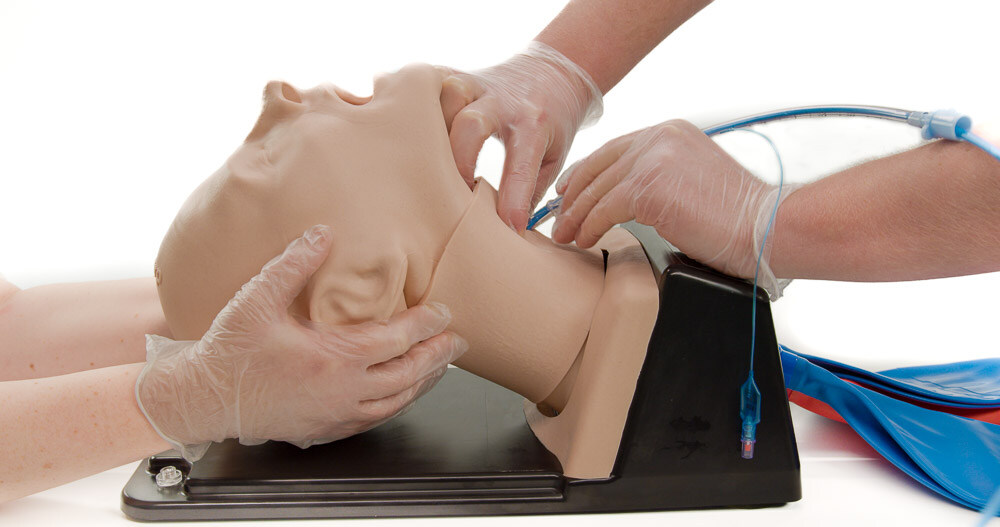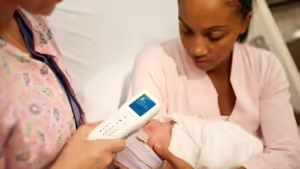In emergency medical situations where a patient’s airway is compromised, immediate action is crucial. One of the life-saving procedures in such cases is a cricothyroidotomy. However, performing this procedure can be challenging, especially in high-stress environments where time is of the essence. Enter TouchCric, a revolutionary tool designed to simplify and enhance the process of cricothyroidotomy. In this article, we’ll explore what TouchCric is, its benefits, and how it is used in real-life medical scenarios.
What Is TouchCric?
TouchCric is an innovative device used to assist in the cricothyroidotomy procedure, which is a surgical intervention performed to create an opening in a patient’s airway. This device is designed to enhance precision, reduce complications, and make the procedure more accessible to medical professionals, even those with less experience in airway management.
Traditionally, a cricothyroidotomy is done manually with a scalpel, forceps, and a tube, which can be daunting in emergency situations. TouchCric aims to reduce the complexity by offering an intuitive, guided method to ensure the airway is opened efficiently and effectively.
A Brief Overview of Cricothyroidotomy
Before diving deeper into TouchCric, it’s essential to understand the procedure it supports. A cricothyroidotomy is typically performed when other airway management techniques, such as intubation, fail or are not feasible. It involves making an incision in the cricothyroid membrane—located between the thyroid cartilage and cricoid cartilage in the neck—to insert a tube that allows air to pass through. This is often a last-resort measure to prevent suffocation in cases like severe trauma, airway obstruction, or anaphylaxis.
Why TouchCric is Needed
Emergencies requiring immediate airway intervention are often chaotic, with high-pressure environments that make it difficult to focus on precise tasks. Traditional cricothyroidotomy requires a high degree of skill, and even experienced medical professionals can find it challenging under stress. Mistakes can result in severe complications, including damage to surrounding tissues, inadequate airway access, or even death if the procedure is not performed quickly enough.
TouchCric simplifies the procedure by providing:
- Guided precision: The device ensures the incision is made in the correct location, reducing the risk of errors.
- Rapid deployment: TouchCric is designed for quick use, allowing medical professionals to establish an airway in a matter of seconds.
- Ease of use: It’s user-friendly, making it accessible for less experienced individuals in emergency situations.
Components of TouchCric
Understanding the different parts of TouchCric is vital to appreciating its function and benefits. The device typically consists of the following components:
1. Targeting Mechanism
The targeting mechanism of TouchCric ensures the correct location for the incision. The cricothyroid membrane can be difficult to identify, particularly in patients with abnormal anatomy or during high-stress situations. TouchCric’s built-in guide helps users quickly locate the membrane, reducing the time it takes to perform the procedure and improving the chances of success.
2. Cutting Mechanism
Instead of relying on a scalpel to make the incision, TouchCric incorporates a built-in cutting mechanism designed to create the precise size and shape of the opening needed for airway access. This reduces the chances of cutting too deep or too wide, minimizing potential damage to surrounding tissues.
3. Tube Insertion Guide
Once the incision is made, the next critical step is inserting a tube to maintain the airway. TouchCric provides a guide to help align the tube correctly, ensuring that it’s placed properly in the trachea and that airflow is established as quickly as possible.
How to Use TouchCric
One of the primary benefits of TouchCric is its simplicity. Here’s a step-by-step breakdown of how it’s used:
Step 1: Prepare the Patient
In an emergency situation, quickly assess whether a cricothyroidotomy is necessary. If traditional methods of opening the airway, such as the Heimlich maneuver or endotracheal intubation, are not possible or have failed, proceed with TouchCric.
Position the patient so that their neck is accessible. If possible, clean the area around the cricothyroid membrane to reduce the risk of infection.
Step 2: Position the Device
Use the TouchCric targeting mechanism to locate the cricothyroid membrane. This is typically found between the thyroid and cricoid cartilage in the patient’s neck. The targeting system ensures that you are placing the device in the correct location.
Step 3: Make the Incision
Once the membrane is located, activate the cutting mechanism. This will create a precise incision in the cricothyroid membrane, opening the airway for tube insertion.
Step 4: Insert the Tube
After the incision is made, insert the airway tube using the guide provided by TouchCric. Ensure that the tube is properly aligned and secured within the trachea to establish an open airway.
Step 5: Confirm Airflow
Once the tube is in place, check to ensure air is flowing freely into the lungs. Look for the patient’s chest to rise and fall or listen for breathing sounds. Adjust the tube if necessary, then secure it to prevent dislodgement.
Benefits of TouchCric
TouchCric has quickly gained attention in the medical field for its numerous benefits. Let’s explore some of these advantages in detail.
1. Speed
When it comes to emergency airway management, speed is critical. TouchCric allows medical professionals to perform cricothyroidotomy in a fraction of the time it takes with traditional methods. This speed can mean the difference between life and death, particularly in cases of severe airway obstruction or trauma.
2. Accuracy
The guided mechanisms in TouchCric drastically reduce the likelihood of making errors during the procedure. By helping users locate the cricothyroid membrane and providing a controlled cutting mechanism, the device ensures that the incision is made in the correct location and at the right depth, preventing damage to nearby structures such as the thyroid gland, vocal cords, or blood vessels.
3. User-Friendly
Even for those with limited experience in performing cricothyroidotomies, TouchCric is designed to be intuitive and easy to use. This is especially important in high-stress environments like emergency rooms or disaster scenarios where a quick response is crucial.
4. Reduction of Complications
Because TouchCric guides the incision and tube placement, it minimizes the chances of complications such as bleeding, infection, or incorrect tube positioning. The precision it offers ensures that patients receive the care they need with minimal risk.
The Role of TouchCric in Modern Medicine
The introduction of TouchCric represents a significant advancement in airway management. As medical technology continues to evolve, devices like TouchCric are becoming essential tools for healthcare providers in emergency settings. Whether it’s in a hospital emergency room, an ambulance, or a battlefield, having access to a reliable and easy-to-use cricothyroidotomy device can save lives.
Training and Education
While TouchCric is designed to be user-friendly, proper training is still necessary to ensure that medical professionals are comfortable using it in high-pressure situations. Many medical institutions are incorporating TouchCric training into their emergency care programs, providing both new and experienced healthcare providers with the skills needed to use the device effectively.
Field Use
Beyond hospitals, TouchCric is proving invaluable in field settings, such as military or disaster relief operations, where traditional airway management tools may not be readily available, and time is of the essence. The portability and ease of use of TouchCric make it an ideal solution for these environments.
Limitations and Considerations
While TouchCric offers many benefits, it’s important to consider some of the potential limitations and challenges associated with its use.
1. Cost
As with any medical device, the cost of TouchCric may be a barrier for some healthcare facilities, particularly in low-resource settings. However, many experts argue that the benefits it provides in terms of saved lives and reduced complications far outweigh the initial investment.
2. Availability
Currently, TouchCric may not be available in all hospitals or emergency departments, particularly in rural or underserved areas. Efforts are being made to expand its availability, but for now, access to the device may be limited depending on geographic location.
3. Learning Curve
Although TouchCric is designed to be easy to use, there is still a learning curve, especially for individuals who are new to airway management. Proper training is crucial to ensure that users can operate the device effectively under pressure.
Touchcric has become a popular go-to platform for cricket enthusiasts who want to stay updated with live cricket scores, commentary, and match highlights. Whether you’re following international tournaments or domestic leagues, Touchcric provides real-time updates that keep fans engaged with the game. Its user-friendly interface and accessibility make it easy for cricket lovers to track their favorite teams and players, no matter where they are. Touchcric has established itself as a reliable source for cricket fans looking for the latest match information at their fingertips.
Conclusion
In emergency medical situations where rapid airway management is necessary, TouchCric offers a revolutionary solution. By simplifying the cricothyroidotomy procedure, reducing the risk of complications, and providing a user-friendly experience, this device is quickly becoming a game-changer in emergency care. Whether in hospitals, ambulances, or field operations, TouchCric is proving to be an invaluable tool for healthcare providers.
As technology continues to advance, tools like TouchCric will likely become even more integrated into medical practice, offering hope and life-saving solutions to patients in critical conditions.



